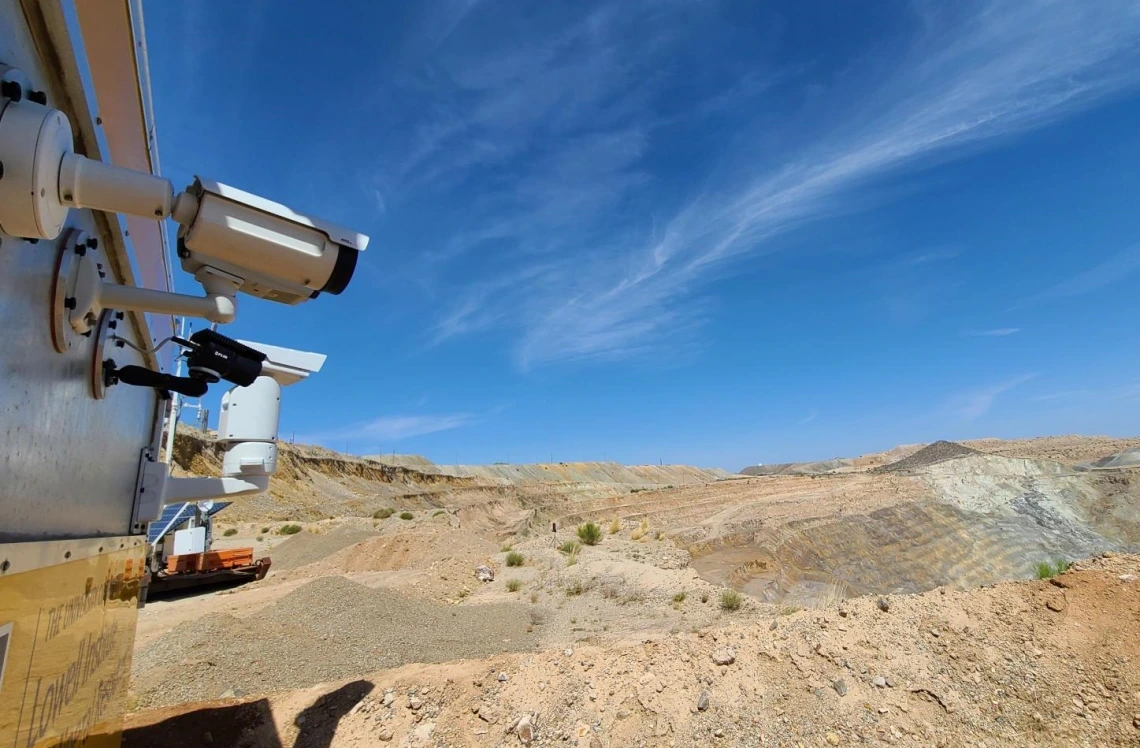
GCE's Research Efforts
As mining operations expand and evolve to meet increasing demand, the impact of geotechnical failure can be devastating and measured in the number of lives lost, costs in billions of dollars, square miles of environmental damage and loss of reputation for individual companies and the industry as a whole.
The GCE is committed to solving real-world, forward-looking geotechnical problems through research that is prioritized and carried out in collaboration with our stakeholders from both industry and academia. Our cross-disciplinary team of geologists, engineers, hydrogeologists, and data scientists are currently conducting research in the following areas:
Thermal Imaging to Detect Rockfall
Thermal imaging detects rockfalls in mining by monitoring temperature changes and identifying unstable areas. By capturing infrared radiation, it spots temperature variations indicating stress or fractures, often preceding rockfalls. This early warning system enhances safety, allowing for timely intervention and reducing the risk of accidents and equipment damage.
Highwall Safety Project
The NIOSH Highwall Safety Project seeks to enhance miner safety by taking a critical look at the factors affecting rockfall rollout distances and the design criteria for open pit rockfall catch benches. This research involves real-world rockfall testing campaigns in open pit mines and input from industry experts on developing tools and guidelines for practitioners to make more informed design decisions for their unique mine sites.
Drone Photogrammetry for Modeling Surface Hydrology in Open Pit Mines
Surface water flow in open pit mines can pose serious safety and operational risks. Drone photogrammetry delivers high-resolution topographic surfaces that can be used to model where water may accumulate, flow, and pond during heavy rainfall and snowmelt. These maps assist on-site personnel in planning and mitigating the dangers of uncontrolled surface water.
S.A.F.E. Slope Data Hub
Contribute to an industry-driven, collaboratively sourced, and widely accessible slope monitoring data hub designed to enhance training, provide actionable guidance for response planning, and drive advanced data analytics.
Direct Shear Variability
Direct shear variability in mining refers to the differences in the shear strength of rock or soil when tested, due to natural variations like mineral composition, grain size, and moisture content. This variability is critical for assessing the stability of slopes and excavations, helping to predict failure zones and design effective support systems to ensure safety and efficiency in mining operations.
Numerical Modeling of Hydromechanically Coupled Responses (HMC)
This project uses 2D numerical modeling to explore the dependent interaction of water and rock, or hydromechanical coupling (HMC), through a case study from a mine in Nevada, USA. Modeling efforts considered factors that impact HMC responses by varying governing parameters such as porosity, rock stiffness (elastic modulus), and permeability and evaluate their impact on pore pressure changes and recovery.
